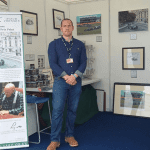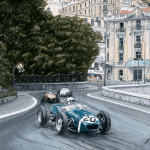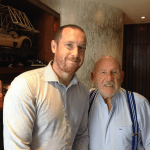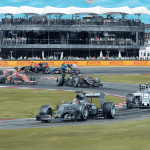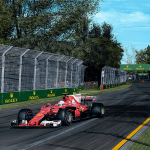Sarah Readings explains more about one of the lesser-known aspects of the Royal Air Force Music Service; the RAF Voluntary Band Association
Music is, and always has been, an important part of our nation’s military heritage. It has long played an essential role in military affairs, from the war carnyx that roused the ancient Celts to war, via the drums and trumpets of Roman Legions, to the bugle call that signals the lowering of the RAF ensign at sunset. Music lifts the spirits, helps keep a parade in step and encourages a sense of comradeship. Military music is a tradition in which the Voluntary Bands (VBs) of the Royal Air Force have proudly participated for a century.
In April 1918 when the Royal Air Force formed from the union of the Royal Naval Air Services and the Royal Flying Corps, musicians of the two services, augmented by fresh recruits, united to form the first RAFVBs. Funding emerged, including donations from officers. The men who flocked to volunteer came from a variety of musical traditions – brass bands, military bands, pipe bands and corps of drums – and their skills covered all manner of instruments. Some were experienced, others were hobbyists.
Soon after the Voluntary Bands began, the Air Ministry received a report calling for the inauguration of a School of Music to be staffed by a team of 50 band instructors. The Air Ministry agreed, only to reconsider when the dust of the Great War settled to reveal enormous debts. In 1920, amid loud arguments from the Army and the Navy that the RAF itself was no longer necessary, the infant RAF School of Music was disbanded. Happily, the RAF Central Band stepped in and supplied a succession of excellent Voluntary Band Instructors (VBIs).
In the 1920s and 1930s, VBs flourished: many RAF stations, both at home and overseas, had their own band and some of the larger ones worked with the RAF Central Band. Many more bands were established as the Second World War drew thousands more people into uniform and the number of RAF bases and personnel increased. A great number of new recruits of all trades had, in civilian life, been keen musicians, whether professional or amateur, and they rejoiced in the opportunity to continue banding while dressed in RAF blue. Even after the war ended, some of them stayed on in the Service and formed professional ensembles as part of the RAF Music Services.
In 1949, the RAF School of Music reopened and offered a bandmaster’s course which produced some marvellous VBIs, mainly Warrant Officers and Flight Sergeants, who guided the various bands for another three decades. By the mid-1970s, 24 bandmaster posts existed at RAF stations both in the UK and overseas.
Today’s RAF Voluntary Bands are led by fully qualified, experienced bandmasters who are the only paid members of the VBs: all other bandsmen and women are willing volunteers.
One of the welcome results of the formation of the RAFVBA is increasing collaboration among the bands. Over the past few years a number of prestigious massed band events have been staged, highlights being a concert at Symphony Hall in Birmingham in 2008 to celebrate 90 years of the Royal Air Force; a commemoration of the 75th anniversary of the Spitfire in Leicester in 2011 and a showcase concert in Cardiff in 2016. For amateur musicians these massed band events are an opportunity to participate in high-profile and prestigious concerts and enhance our feelings of pride in the Voluntary Band Association and its place in the modern music service.
Now for a more personal perspective – as a proud member of RAF Halton Area Voluntary Band, I have enhanced my musical life and improved my musical skills. I have strong links to the Armed Forces; both of my grandfathers served in WWI in the Australian and British Armies, my father served in the Australian Army in WWII and two of my brothers served in the British Army for years. I married into an RAF family; my mother-in-law was ex-WRAF and my father-in-law a Squadron Leader in the RAF. After his death my mother-in-law remarried a Wing Commander in the RAF. I have a nephew serving at RAF Benson as Puma ground support and another nephew has recently left the Royal Marines after many years’ service, including Iraq and several tours of Afghanistan.
Military tradition and its ethos of service and dedication has formed a backdrop to my life and in a very small way I am able to continue that. As a mature amateur musician, who came late to playing a brass instrument, I was able to learn a new skill and gain an insight into the world of military music. For me, a particular highlight is our participation in the annual Service of Remembrance held by the War Widows Association of Great Britain in Whitehall on the Saturday preceding Armistice Sunday. There is no greater sense of pride than marching to our national memorial, the Cenotaph, and participating in this moving event and supporting women who have suffered the ultimate loss in the protection of our country.
There are advantages to being a civilian member – I for one never thought I would learn to stand on a drill square and start working out my left foot and right foot and then be expected to march, play, stay in step, follow the right direction and not end up facing the opposite way to my comrades in the band. In conclusion, while membership of an RAF Voluntary Band does require commitment and either an understanding of, or a willingness to learn and embrace service discipline, in return you are part of an organisation that can widen your musical experience much more than is usually possible in a civilian alternative.
For more information, please visit www.haltonvoluntaryband.co.uk
It will be pilots on parade this month, as the RAF100 Roadshow reaches Horse Guards Parade, 6th – 9th July as part of the centenary year. On display will be aircraft from all through their history, including; Royal Aircraft Factory BE2c Biplane, Supermarine Spitfire MkXVI, Gloster Meteor F4 (the actual aircraft that captured the world air speed record of 616 mph in 1946), Harrier GR3, Tornado GR1, DC3 Dakota and a Chinook Helicopter. As well as the past, the RAF will also be looking to the future with an interactive STEM/Techno Zone and learn more about how they’re creating the next generation Air Force. After the Roadshow at Horse Guards there will also be a flypast and parade on 10th July. Visit www.raf.mod.uk
With grateful thanks to Mrs Mary Mackie, for her assistance with this article and her research into and words on the history of the RAF VBA. Mrs Mary Mackie, Author & Speaker, Kings Lynn, Norfolk.





